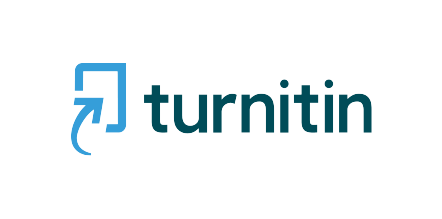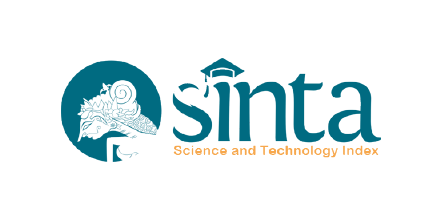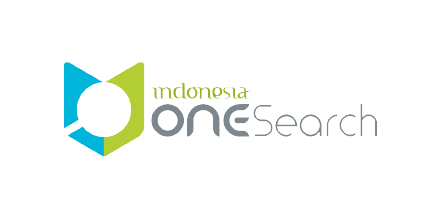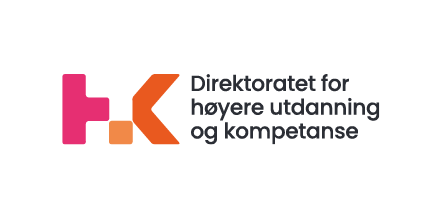The Corporate Management Strategies as Empowering Persons with Disabilities Through Equal Opportunity and Access to Employment in Indonesia
DOI:
https://doi.org/10.21776/ub.ijds.2022.009.01.06Keywords:
Persons with Disabilities, Equal Opportunity, Access to work, Model of Company Management, Accessible WorkplaceAbstract
The absence of implementation instructions by formulating strategies as a model for company management as well as the company's initial provision in providing equal opportunities and preparing access to workers with disabilities. To formulate a management model as a recommendation for private companies in the policies of the district/city/provincial Manpower and Transmigration Office and agencies in the city/district government or State-Owned Enterprises companies, and as a recommendation for the preparation of academic texts of regional regulations in Indonesia. The results that the real problem is the environment or society's perspective, and companies can consider the advantages of workers with disabilities, in the form of character and abilities as well as a good image for companies. Adjustment the company's commitment to providing additional funds to prepare human resources and additional facilities to meet the needs in the work environment, increasing in the form of training on the awareness of other workers as well as awareness that persons with disabilities have rights as workers, and as business opportunities and benefits, or through company activity in the form of Corporate Social Responsibility. More recently, the synergy between companies, the government and the community of people with disabilities, in the form of imposition of rewards based on the number of permanent workers and temporary workers of people with disabilities to all companies.
References
Aini, W. N., & Yulianingsih, W. “Fulfillment of Labor Rights for Persons with Disabilities in Getting a Job (Study at the East Java Manpower and Transmigration Office).” Journal of the Indonesian Revolution, vol. 1, no. 8, 2021, pp. 835–53.
Aji, A. L. D., & Haryani, T. N. “Diversity in the World of Work: Opportunities and Challenges for Disabilities. Public Spirit.” Journal of Public Administration, vol. 12, no. 2, 2017, pp. 83–93.
Cita, P. Employment of Persons with Disabilities in Japan (Doctoral Dissertation). Darma Persada University, 2017.
Dewi, U. “Implementation of Quota Policy for Persons with Disabilities to Get Jobs in Yogyakarta City. Natapraja.” Journal of State Administration Studies, vol. 3, no. 2, 2015, p. 81.
Dini, Widinarsih. “Persons with Disabilities in Indonesia: The Development of Terms and Definitions.” Journal of Social Welfare Sciences, vol. 20, no. 2, 2019, pp. 127–42.
Direction, S. The Neglected Class of Diversity: How Firms Can Increase Disability Inclusion. Vol. 37, no. 6, 2021, pp. 1–4.
Effendi, A. B. Implementation of Diversity Program for Workers with Disabilities at PT. The Great Wangta of Surabaya City. Brawijaya University, 2017.
European Network for Corporate Social Responsibility & Disability. The European Network for Corporate Responsibility & Disability Contribution to the Draft of the International Framework. 2013.
Fasciglione, M. “Corporate Social Responsibility and the Right to Employment of Persons with Disabilities. In R. Della Fina & V. Cera (Ed.), Protecting the Rights of People with Autism in the Fields of Education and Employment.” Springer International Publishing., 2015, p. 171, doi:10.1007/978-3-319-13791-9_7.
Febrianto, R. “Empowerment of Persons with Disabilities.” Journal of Psychology, vol. 1, no. 7, 2017.
Geneva : ILO. ILO Guidelines on the Management of Persons with Disabilities into ILO Translated FromManaging Disability In The Workplace: ILO Code Of Practice. Managing Disability In The Workplace: ILO Code Of Practice. 2013.
GENEVA : ILO. ILO Guidelines on Making Workplaces Inclusive of People with Disabilities, Translated by Business as Unusual: Making Workplaces Inclusive of People with Disabilities. Bureau for Employers’ Activities (ACT/EMP), Conditions of Work and Equality Depar. 2014.
Hidayat, K. Analysis of Suitability of Types of Work on Characteristics of Workers with Disabilities (Case Study CV. Rosalia Jaya) (Doctoral Dissertation). 2018.
ILO and Irish Aid. Achieving Equal Employment Opportunities For People With Disabilities Through Legislation. Guidelines. 2007.
Lindsay, et. all. “A Systematic Review of The Benefits Of Hiring People With Disabilities. into Susiana, Wardah. 2019. Fulfillment of the Rights of Persons with Disabilities in Getting Jobs in BUMN. Law Reform, Vol. 15, No. 2.” Journal of Occupational Rehabilitation, vol. 28, no. 4, 2018, pp. 634–655.
Macy, G. “Accommodating Employees with Disabilities: A Matter of Attitude. Pittburg State University, Inc. United States of America into Monica Kristiani Widhawati, et All. Inclusive Workspace for Workers with Physical Disabilities.Journal of Social Welfare Science.” Journal of Managerial Issues, vol. 8, no. 1, 1996, doi:10.15408/empati.v8i2.8258.
Magasi, S., Wong, A., Gray, D. B., Hammel, J., Baum, C., Wang, C. C., & Heinemann, A. W. “Theoretical Foundations for the Measurement of Environmental Factors and Their Impact on Participation among People with Disabilities.” Archives of Physical Medicine and Rehabilitation, vol. 96, no. 4, 2015, pp. 569–77.
Monash University. Disability in Indonesia: What Can We Learn From The Data. into Rhivent M. M. Samatara, Dani R. Pinasang, Natalia L. Lengkong. Employment Rights for Persons with Disabilities in the Perspective of Human Rights. Administratum, 2021. Vol. IX/No. 1. 2017.
Monica Kristiani Widhawati, Dkk. “Nclusive Workspace for Workers with Physical Disabilities.” Journal of Social Welfare Sciences, vol. 8, no. 2, 2019, p. 113, doi:10.15408/empati.v8i2.8258.
Oware, K. M., & Mallikarjunappa, T. “Disability Employment and Financial Performance: The Effect of Technological Innovation of Listed Firms in India.” Social Responsibility Journal., 2020.
Poerwanti, Sari D. “Management of Personnel with Disabilities to Realize Workplace Inclusion.” Inclusion: Journal of Disability Studies, vol. 4, no. 1, 2017, p. 3.
Santoso, M.B., &. Apsari N. C. “Paradigm Shift in Disability.” Intermestic: Journal of International Studies, vol. 1, no. 2, 2017, pp. 166-176.
Santuzzi, A. M., Martinez, J. J., & Keating, R. T. “The Benefits of Inclusion for Disability Measurement in the Workplace.” Equality, Diversity and Inclusion: An International Journal, 2021.
Scotch, R. K., & McConnel, C. E. “Disability and the Future of Work: A Speculative Essay. In Factors in Studying Employment for Persons with Disability.” Emerald Publishing Limited., 2017.
Shaleh, I. “Implementation of the Fulfillment of Rights for Persons with Employment Disabilities in Semarang.” Kanun: Journal of Legal Studies, vol. 20, no. 1, 2018, p. 79.
Special Representative of the Secretary. General on the Issue of Human Rights & Transnational Corporations and Other Business Enterprises. 2011.
Thohari, S. “Views of Disability and Accessibility of Public Facilities for Persons with Disabilities in Malang City.” IJDS: Indonesian Journal of Disability Studies, vol. 1, no. 1, 2017.
Turcotte. M. Persons with Disabilities and Employment Statistics Canada. 2014.
United Nations. “Economic and Social Commision for Asia and The Pacific (ESCAP) United Nations.” Publication., United Nations, United Nations, 2016.
Waxman, D. “Model of Successful Corporate Culture Change Integrating Employees with Disabilities. In Factors in Studying Employment for Persons with Disability.” Emerald Publishing Limited., 2017.
WHO and The World Bank. Understanding Disability, Chapter I. World Report on Disability. 2011.
Published
How to Cite
License
Copyright (c) 2022 Emmilia Rusdiana, Arinto Nugroho, Nurnilam Sari

This work is licensed under a Creative Commons Attribution-NonCommercial 4.0 International License.















